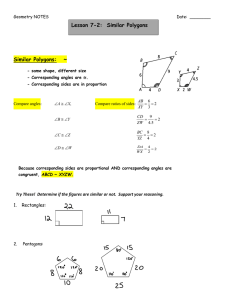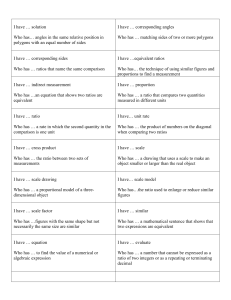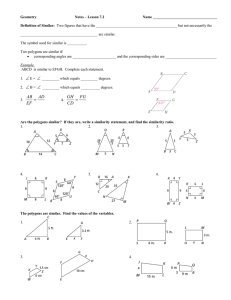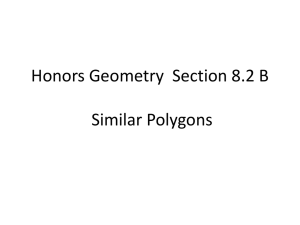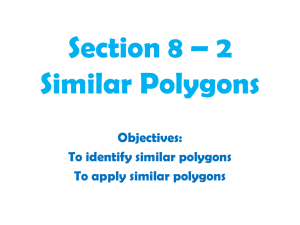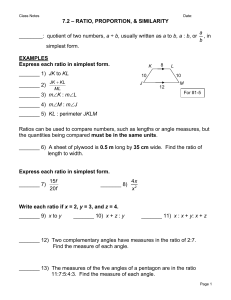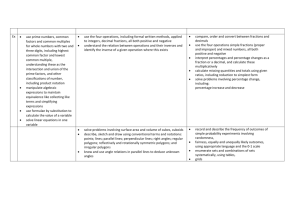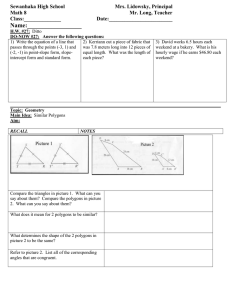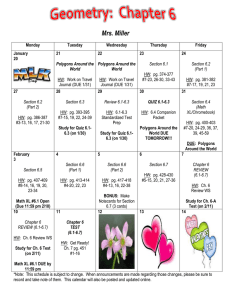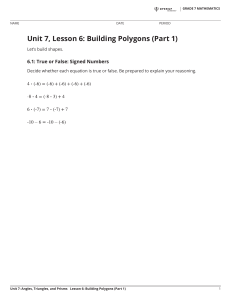NOTES: Similar Polygons (Chapter 7 Section 2) Are these figures similar?
advertisement
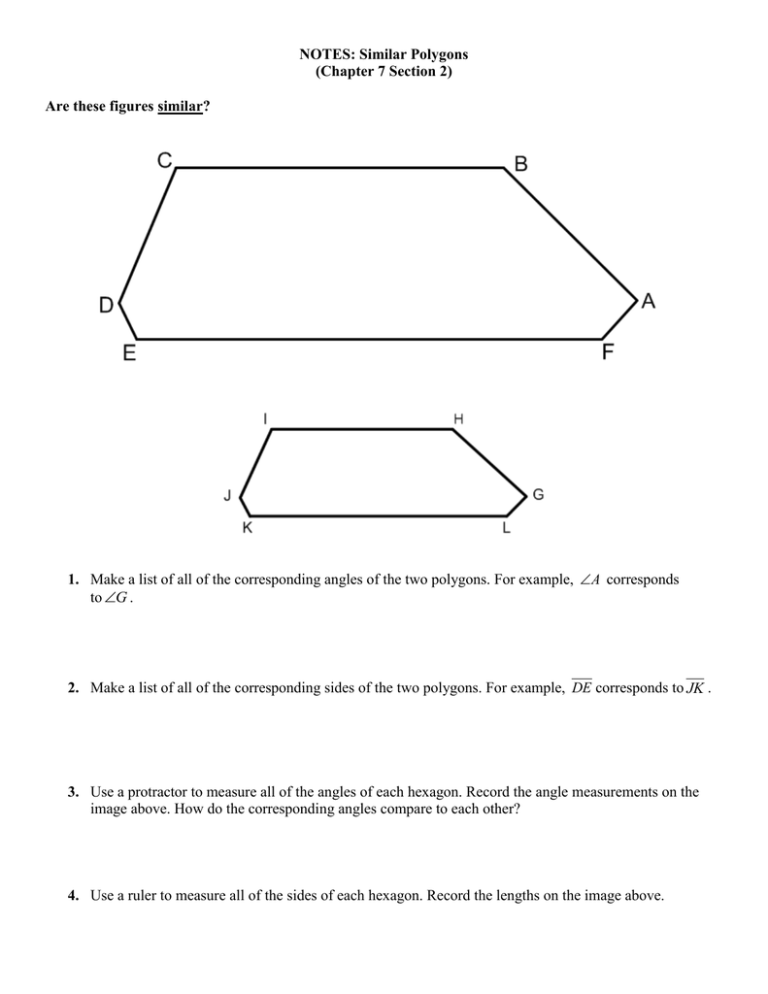
NOTES: Similar Polygons (Chapter 7 Section 2) Are these figures similar? 1. Make a list of all of the corresponding angles of the two polygons. For example, A corresponds to G . 2. Make a list of all of the corresponding sides of the two polygons. For example, DE corresponds to JK . 3. Use a protractor to measure all of the angles of each hexagon. Record the angle measurements on the image above. How do the corresponding angles compare to each other? 4. Use a ruler to measure all of the sides of each hexagon. Record the lengths on the image above. 5. Find the ratios of the lengths of the corresponding sides. (For example, since DE corresponds to JK , you would write their two lengths as a ratio.) How do all of the ratios of corresponding sides that you found compare to each other? 6. Calculate and compare these ratios within each polygon: AB GH EF KL with and with . What do you BC CD HI IJ notice? 7. Based on the answers you got for #1-6, complete this definition of “similar” (Note: the symbol for ‘similar’ is ~) : Two polygons are similar if and only if their corresponding _____________________ are congruent and their corresponding _____________________ are proportional. STOP HERE…WE’LL DO #8-9 as a class 8. ABCD ~ EFGH. Complete each statement: (pg 373 Example 1) a. mE m ___ ___ b. AB AD EF ? c. mB m ___ ___ d. GH FG CD ? 9. Determine whether the triangles are similar. If they are, write a similarity statement and give the similarity ratio. (Pg 373 Example 2) 10. LMNO ~ QRST. Find the value of x (Hint: Use example 3 on pg 374 to help you with this problem) 11. Use the quadrilaterals from problem #10. Find SR to the nearest tenth. 12. A painting is 24 in wide by 36 in long. The length of a postcard reduction of the painting is 6 in. How wide is the post card?
